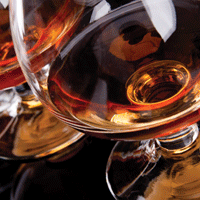The bar scene has evolved. Whisky has made a comeback, and other classics are earning attention, too. This comes as luxury items are trending and there’s an uptick in aged brandies such as cognac and other fruit-based eaux-de-vie. And, while these fruit-derived spirits have not kept pace with other luxury-aged spirits such as single malts (up 12 per cent in Ontario) or deluxe rum (up 10 per cent in Ontario), they are seeing increases.
In Ontario, for example, the LCBO reports cognac sales in fiscal 2011/12 grew by 5.8 per cent in net sales and 6.6 per cent in volume. Overall, the cognac category has a 16-per-cent share of licensee sales in Ontario, according to Heather MacGregor, senior communications consultant, LCBO.
But, what cognac may lack as share of a market pie chart, it makes up for in reputation and awareness. It’s a symbol of luxury, prestige and French pedigree. However, to attract new younger consumers, major brands such as Courvoisier, Hennessy and Rémy Martin have been working to break down traditional associations of the category, which is often viewed as pretentious, old, stuffy and male-centric. An important part of this strategy is marketing cognac as ideal for cocktails and long drinks, rather than just prepared ‘neat.’
This fall, Rémy Martin took up the cause, building a pop-up “cellar” with a bar, lab-like tasting/blending room and atmospheric aging cellar, complete with oak barrels installed in a former yoga studio on Toronto’s trendy Liberty Street. Between Oct. 10 and Nov. 3, bar managers, sommeliers, mixologists and other trade insiders (and, on separate occasions, the public) were invited to experience cognac in a new way. The evenings started in the ‘bar’ with a Rémy Martin cocktail — a choice of Sidecar, Old-fashioned or Spicy Toddy. In the blending room, guests tasted four-year-old, eight-year-old and 14-year-old Rémy and were asked to recreate the correct blend to make Rémy VSOP. In the cellar room, participants tasted Coeur de Cognac and XO, drawn with a pipette out of a barrel.
Meanwhile, Courvoisier created the Culinary Masterpieces culinary challenge to inspire students and at-home chefs to use cognac in cooking. CBC’s Best Recipes Ever host Kary Osmond emceed its Culinary Masterpieces showcase held in the fall at Toronto’s Maison Mercer, and it featured the recipes of the three student chefs and three at-home chef finalists.
Back behind the bar, the personal small aging barrel is another trend. Robin Wynne, general manager and bartender at Fynn’s of Temple Bar in Toronto, says he’s been doing cask aging for about a year and a half now. He generally has about 10 casks on the go, aging cocktails and spirits for up to three months. “This integrates the flavours and adds a real smoothness,” he says.
But, any way you source it, raising awareness about classics such as cognac is an ongoing process. “For our demographic [18 to 25] the popularity of cognac is on the rise, but is still very distant behind staples such as rum and vodka. Its popularity is largely determined by references in current music trends,” admits Vincenzo Corelli, manager of Montreal’s Light UltraClub on Crescent Street. “The most common cocktail that we serve using cognac is a Stinger, made with cognac and white creme de menthe.”
The uptake among younger drinkers may be slow, but it’s coming, thanks to good cocktails, cognac-infused recipes, astute marketers and a little help from the music industry.




















